Matador Network's Blog, page 525
February 21, 2022
Orlando’s tech-savvy Wave hotel is also home to the hotel world’s coolest art collection

In Orlando, it’s hard to stand out from under the shadow of the mouse. But illuminating 16 stories of blue glass curves with rainbow LED lights is a start.
Such is how the Wave Hotel – which bills itself as the most technologically advanced new property in America – announces itself from the hypnotic swath of Central Florida sprawl that lines State Route 417. Just when you’re about to nod off from the endless parade of grassland and graded construction sites, this beacon of color and creativity tells you that what lies off the exit is going to be something different.
Different is exactly what Orlando – known to many as the home of Mickey Mouse, the Hulk Coaster, and not much else – is looking for. So this showcase of technology and technicolor in Lake Nona isn’t just an exciting new hotel, it’s a sign that Orlando is moving to deliver more for tourists than just the Magic Kingdom. Ignore for a moment that you’re sharing an area code with Cinderella’s Castle and you’ll realize that the Wave is, as far as hotels go, America’s greatest new confluence of art and technology.
A modern art treasure that feels like a home
Photo: Lake Nona Wave Hotel
The Wave is the centerpiece of Lake Nona, a master-planned community near Orlando International Airport that’s home to the USTA Tennis Center, a 650-acre medical campus, and hundreds of “look how much house we can get in Florida” type of homes. It’s the brainchild of Tavistock Development, owned by billionaire and avid art collector John Lewis.
The community’s iconic centerpiece is the azure glass tower of the Wave, intended to be a high-tech, art-filled community center for both visitors and locals.
“This is the living room of Lake Nona,” says Juan Santos, Tavistock’s senior VP of innovation and brand experience. “Art was very much in the mind of Mr. Lewis. He loves the idea that every time you come to a place, there’s additional things you discover.”

Photo: Lake Nona Wave Hotel
So he turned the hotel into a modern art showcase, where little enclaves of curiosity take guests from one art-filled experience to another, all within the confines of the hotel’s lobby and cocktail lounge.
“I wanted to give the feel of island hopping, or traveling Europe by rail,” says Amy Parry, who curated and designed the art in the Wave. “The niches needed to look cohesive, but every one is going to have its own identity.”
One niche has a brown leather couch set on its side, with a pig-shaped cocktail table accenting the hunting lodge motif. Another features a Vladimir Kagan-inspired couch with low slung pastel chairs and a long coffee table for a trip to mid century-modern America. Upstairs in the Haven restaurant, a chair shaped like a peacock’s feathers sits under a forest of artificial foliage for a foresty vibe.
The hotel is full of Instagrammable moments, sure, but none of it feels contrived. The Wave’s design doesn’t scream for attention, like the nearby theme resorts or seemingly every hotel that’s opened in Miami since the advent of the influencer. It exudes a quiet confidence that says, “Yeah, this stuff is pretty cool, but, really, it’s just our living room.”
Other hotels have art, but the Wave integrates it in ways that feel unintentional. If the 21C is an art museum with rooms upstairs, the Wave is the house of an eccentric relative with really good taste.

Photo: Lake Nona Wave Hotel
That house also includes a backyard full of chrome sculptures that seem to blend into the deep blue Florida sky. The Wave’s sculpture garden – which doubles as a public gathering place for Lake Nona and an events space for the hotel – also has one of Arturo di Modica’s “Charging Bull” statues. You may recognize its twin on Wall Street. The garden also gets a little less family-friendly with “Leda and the Swan,” depicting some hot deity-on-mortal action that’s far less upsetting than the literary inspiration.
Just when you think the art tour is over, you open an elevator and are greeted by a cloudy interpretation of Magritte’s “Son of Man,” with a floor inspired by MC Escher. The Magrelevator is one of three custom-designed elevator pods each with a completely different theme and music.
Art hotel meets high-tech world with color-changing windows and toilets that greet you
Photo: Lake Nona Wave Hotel
The ability to play different music in different elevators is but one of the technological advancements that makes the Wave so alluring.
The most obvious advents are the View Smart windows that make up the facade, which tint darker or lighter depending on how bright it is outside.
Another big tech point is the in-room app, which allows guests to sync their phone to the room and set things like lighting and temperature from anywhere. So if your evening is going well and you want to make a mood, you can dim the lights while eating dessert. If your afternoon pool session got you a little sun-kissed, you can make sure the room is ice cold upon your return.
Each room is also equipped with TOTO smart toilets, which has seats that raise to greet you and spray your bottom with warm water or cool air, if asked. A handful of wellness-themed suites have lights timed to your circadian rhythms, and offer beds that’ll tip your head up if they sense snoring.
While the gym is serviceable, guests also have access to the Lake Nona Performance Club, a 130,000-square-foot facility with a rock-climbing wall, golf simulator, group exercise galore, and endless interaction with locals.
Santos says the Wave boasts plenty of behind the scenes tech too, including pipe sensors that can detect calcification and water heaters that ensure the entire property is never lacking in warm water.
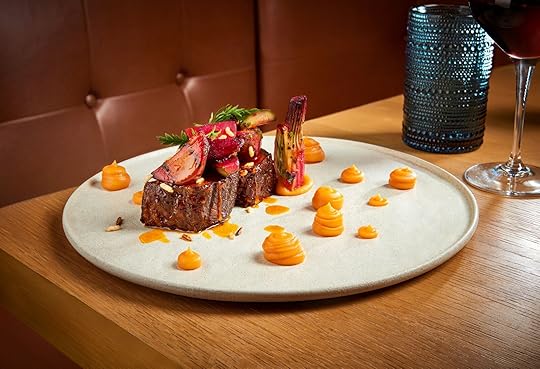
Photo: Lake Nona Wave Hotel
Inside Bacan, the Wave’s signature restaurant, Rosie the robot is busy bussing what’s left of the night’s duck breasts with green tomatillo and whole truffle chickens. While the food is good, what’s most striking is the art. A story-tall mural of a green butterfly that looks a little like Old Florida on acid dominates the dining room, ensuring art is still at the center of everything the Wave does.
“On its surface, it’s sexy, it’s exotic, it’s really cool,” says Parry of the mural. “But when the light comes up, you can see it’s telling a story of the nature of the area, and of the technology of the area, so everything has some kind of symbolism.”
The hotel’s cocktail bar, Living Room, is similarly a work of art. Set under a cherry blossom tree and lined with bright blue chairs, the bar serves stuff like Thomas Edison’s Bright Idea, an easy-drinking Lillet Blanc cocktail presented in a lightbulb glass.
“We’re doing a lot with low-ABV and zero ABV cocktails,” says beverage manager Alexa Delgado. “We want this to be a place people can come and have more than one drink and feel good the next day.’

Photo: Lake Nona Wave Hotel
Delgado came to the Wave from the more tradition-bound world of the Ritz-Carlton, and says she’s grateful for the creative freedom she’s been given. Parry echoed that sentiment.
“Ownership really let us take the reins when it came to experience and design,” she says. “It’s been really exciting to do that.”
The bar is filled with a boisterous mix of conference guests and locals, a sure sign that the Wave has achieved its aim of being a common space for Lake Nona. With Disney opening new corporate offices literally next door, it seems tailor made for business travelers and transplants in a creative industry.
While the Wave might not be enough to bring someone to Orlando who has no other reason to be there, it’s an unexpected gem of art and design in a city that longs to be recognized for a different kind of character. It’s a provocative place to lay your head, and brings art to the hotel space in a way few properties have. It might not be a draw for tourists on the same level as Disney, but the Wave gives Orlando sophistication. And it’s certainly a lot more than one would expect sticking out of the Central Florida skyline.
Best Airbnbs in Austin, Texas

Austin is one of the fastest-growing cities in the United States. It’s got music, it’s got movies, it’s got food and wine and beer and just about everything you could want in a destination. For large groups like bachelor parties, Airbnbs are the best way to house everyone. But if it’s your first visit, it’s easy to get overwhelmed with the many possibilities for accommodation. Don’t get frazzled — we’ve put together a list of our top Airbnb Austin rentals for large groups to help.
We hope you love the Austin Airbnb stays we recommend! Just so you know, Matador may collect a small commission from the links on this page if you decide to book a stay. Listed prices are accurate as of the time of publication. See our full Advertiser Disclosure here.
1. Large townhouse near 6th St. music venues and nightlife 1inn-cahoots-airbnb-austin-2
1inn-cahoots-airbnb-austin-2Photo: Airbnb
 2inn-cahoots-airbnb-austin-3
2inn-cahoots-airbnb-austin-3Photo: Airbnb
 3inn-cahoots-airbnb-austin
3inn-cahoots-airbnb-austinPhoto: Airbnb
 4inn-cahoots-airbnb-austin-4
4inn-cahoots-airbnb-austin-4Photo: Airbnb
This downtown Austin townhouse has it all. It’s near Sixth Street and some of the world’s best music venues, has an epic patio with skyline views, and there’s even a pool on site that your group can reserve in three-hour increments. The property is designed for large groups, accommodating up to 15 guests, and everything you’ll need for the trip is within walking distance of this condo-hotel property, dubbed Inn Cahoots — making it an ideal base for a fun weekend.
Fifteen guests, five bedrooms
Price: $776 per night

Photo: Airbnb

Photo: Airbnb

Photo: Airbnb

Photo: Airbnb

Photo: Airbnb
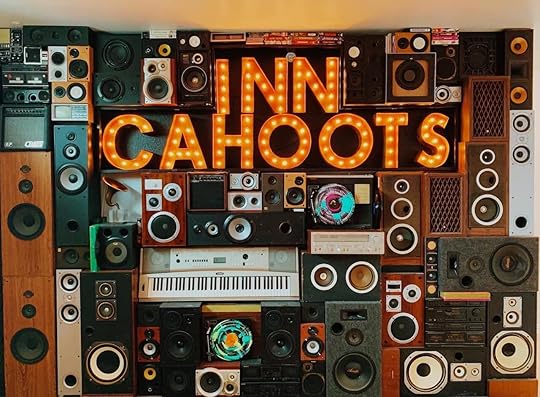
Photo: Airbnb
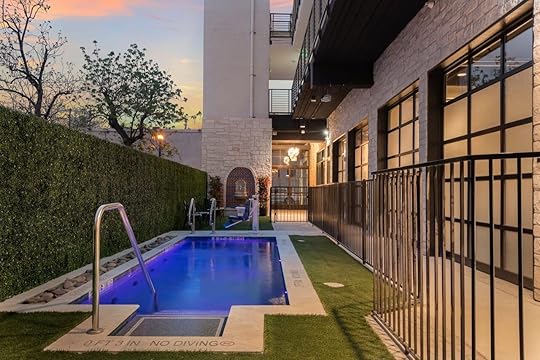
Photo: Airbnb

Photo: Airbnb
You could, should you desire the most epic bachelor party of all time, rent out the entire Inn Cahoots hotel at a rate one might find suspiciously low, considering what you’re getting. This listing is nothing short of epic — an entire hotel including 23 bedrooms, 7,000 square feet of living, partying, and event space, and 61 beds. Normal capacity restrictions for Airbnb properties don’t apply here, you can bring more than the allotted 16 people, and have easy access to legendary events such as SXSW, live music across the city, and an outdoor roofdeck with skyline views.
Contact property for capacity restrictions
Price: $2,887 per night
3. House in Dawson neighborhood with hot tub, near bars and restaurants
Taking a trip to Texas? Check out Matador’s guides to the best places to stay across the Lone Star State:
The best Texas Airbnbs to experience Lone Star culture The best Dallas Airbnbs, from a Deep Ellum warehouse to a family ranch 9 San Antonio Airbnbs within walking distance of the riverwalk The 9 most exciting boutique hotels in Dallas These 9 luxurious Houston Airbnbs are the best in the heart of the city

Photo: Airbnb

Photo: Airbnb

Photo: Airbnb

Photo: Airbnb
A bit of class never hurt a bachelor party. Especially in Austin, where everything is bigger anyway, you might as well make it nice. This home accommodates groups up to 16 people and has a hot tub. It’s also located right next to some of the city’s coolest bars, breweries, and dining options, putting you in the center of the action from just south of downtown Austin.
Sixteen guests, three bedrooms
Price: $479 per night

Photo: Airbnb

Photo: Airbnb

Photo: Airbnb

Photo: Airbnb
When an Airbnb listing notes “bachelor and bachelorette parties welcome” in its title, you know it’s ready for a good weekend. This south Austin home is decked out with lawn games, tons of space, and room for 12 guests. At that level, it’s also among the most affordable bachelor party Airbnbs in Austin, saving you and your crew some cash for all those nearby pubs.
Twelve guests, three bedrooms
Price: $550 per night

Photo: Airbnb

Photo: Airbnb

Photo: Airbnb

Photo: Airbnb
Constructed in 1909, the 3,500-square-foot house has been restored and can be rented for groups of up to ten people. The property includes a massive backyard, including a covered dining table, BBQ, and fire pit. It’s also in the coolest part of town, making it ideal for bachelor parties in Austin when proximity to breweries, nightlife, and live music — along with easy access to rideshares and food trucks — is essential.
Ten guests, five bedrooms
Price: $700 per night

Photo: Airbnb

Photo: Airbnb

Photo: Airbnb

Photo: Airbnb
This lakefront treehouse is your spot for an Austin bachelor party staycation. It has a private dock, so you can bring your boat and fishing rods. The pool and hot tub look out over the water, which offers outstanding views — perfect for a sunset drink. Downtown Austin is 20 miles away, but no doubt it’s worth the drive for the location. This home can also serve as a good jumping-off point to explore other places in the area.
Nine guests, three bedrooms
$1,509 per night

Photo: Airbnb

Photo: Airbnb

Photo: Airbnb

Photo: Airbnb
This property has a rooftop deck overlooking the lake, patios, and a huge waterfront lawn — the perfect place to rent if you have a big group of people for a long weekend. It sleeps 12 people with plenty of space to spread out and play games, have a swim, or break off for team-building activities. The view from the deck is one of the best anywhere in central Texas and should be enjoyed at sunset. 
Twelve guests, five bedrooms
Price: $963 per night
Top airbnbs in Las Vegas

Hotel rooms in Las Vegas are expensive. Fortunately, the city is loaded with alternative options that offer pristine views of the Strip, convenience to everything, and epic features like high-rise balcony hot tubs and blackjack tables to boot. What’s more, you can even rent many Vegas hotel suites on Airbnb, with top options noted below. These are the top Airbnb Las Vegas rentals in the city’s hotspots.
Booking for a bachelor or bachelorette party? Check out the best party pads in Vegas
We hope you love the Airbnb Las Vegas properties we recommend! Just so you know, Matador may collect a small commission from the links on this page if you decide to book a stay. Listed prices are accurate as of the time of publication. See our full Advertiser Disclosure here.
Palms Place Penthouse with balcony hot tub and best views in the city
Photo: Airbnb

Photo: Airbnb

Photo: Airbnb

Photo: Airbnb
One thing you’ll notice from looking up listings on Airbnb is that there are a lot of listings inside Palms Place. The second tower at the Palms Casino Resort is a mix of almost identical suites for rent and condos to own. Apparently, everyone in Las Vegas bought a condo here at some point, and they all have them listed on Airbnb. You’ll have a lot to choose from, but we cherry-picked a few extra-special standouts. (But again, they’re all nearly identical.) This one is very clean and looks exactly like the hotel version of the room but with colorful throw pillows. Bonus: A stay at the Palms puts you pretty much as close as you can be to the Strip without actually being on the Strip.
Three guests, studio
Price: $709 per night
Two-bedroom Vdara Penthouse with Bellagio fountain views
Photo: Airbnb

Photo: Airbnb

Photo: Airbnb

Photo: Airbnb

Photo: Airbnb
You can stay in a room at the Vdara, or you can stay in a high-end luxury suite at the Vdara, complete with views of the Vdara’s pool deck and the rest of the sparkling Bellagio fountains. With two bedrooms and a high-end lounge space perfect for entertaining, you won’t find a classier spot to post up with your Vegas crew. This spot is everything Vegas dreams are made of — expansive views of the strip and luxe amenities in the room to the point that even leaving it begins to feel like a questionable idea. But then you remember all the epic stuff happening down below . . .
Six guests, two bedrooms
Price: $584 per night
Penthouse inside a hip LV high-rise with balcony hot tub
Photo: Airbnb

Photo: Airbnb

Photo: Airbnb
If you want to know what all the LV hype is about, stay in this comfortable-yet-stylish penthouse suite. You’ll have a pool table and pristine views of the strip and downtown, along with ample lounge space for your entire party. If you want to experience what Vegas is really about, this is prime Airbnb Las Vegas Epicness. Both the strip and Fremont scenes are walkable, with plenty of options for dining, partying, and poker nearby. The hot tub itself is worth the cost of admission.
Eight guests, two bedrooms
Price: $1,428 per night
A big, beautiful, bright white estate
Photo: Airbnb

Photo: Airbnb

Photo: Airbnb

Photo: Airbnb
Not big on that high-rise life? Minimalists will love this large, five-bedroom home that is, frankly, way too pure and white and untarnished for a Vegas rental, where you’ll enjoy a private pool and yard, all within a 10-minute Uber ride to the Strip. Onsite are a large pool, full kitchen, pool table, and five bedrooms to house your entire party. There’s even a poker table and a hot tub. This is the spot for when spending quality time with your group is just as important as hitting the strip.
Eight guests, five bedrooms
Price: $468 per night
Modern luxe home in a historic neighborhood
Photo: Airbnb

Photo: Airbnb

Photo: Airbnb

Photo: Airbnb
Yes, Vegas has historic neighborhoods! This home is full-on luxury complete with a waterfall pool, indoor game area with pool table, and all the trimmings you’d expect Oprah or The Queen to expect on a visit to Sin City. Grab your entire crew, because this spot is set to impress, and you’ll like like a baller for holding the reservation.
Eight guests, four bedrooms
Price: $1,024 per night
Mini-mansion near Strip with a huge pool
Photo: Airbnb

Photo: Airbnb

Photo: Airbnb

Photo: Airbnb
As advertised, this is a big, comfy home with a huge pool. Yes, huge. If you’ve ever wanted to feel as though you’re in a private country club while lounging in your pajamas, this is the place to do it. The property is gated, with an open and well-lit floor plan that invites you to let go of the stresses at home and let go — Vegas style. This Airbnb Las Vegas home takes luxury up a notch, with the benefit of being a private residence rather than a hotel room or high-rise apartment. So feel free to turn up the music and have a good time — there’s no one around to call down to the lobby with a complaint.
Eleven guests, four bedrooms
Price: $1,286 per night
Super-cute home with a super host
Photo: Airbnb

Photo: Airbnb

Photo: Airbnb

Photo: Airbnb
This place has a minimalist style but with lots of pops of happy colors and high-end finishes. It embodies the desert aesthetic and does so at a rate that makes it a good option for couples and small groups, even though the home is suitable for up to eight guests. Take some pics in front of the cactus garden, lounge out in the comfortable interior, and prepare gourmet meals at home before heading out to experience the city. The yard features a bocci court and cornhole.
Eight guests, three bedrooms
Price: $300 per night
A very nice, clean home close to downtown with a nice pool
Photo: Airbnb

Photo: Airbnb

Photo: Airbnb

Photo: Airbnb
Affordable and conveniently located for people who want to do both downtown things and Strip things, this place has a great kitchen, living room with lounge area, and a pool deck with ping pong and games — there’s a pool table, too, and a blackjack table, so you can get your game on and warm up before hitting the casinos. The home has a nice pool, a desert theme, and is perfectly suited to both groups and families.
Tropical retreat with heated pool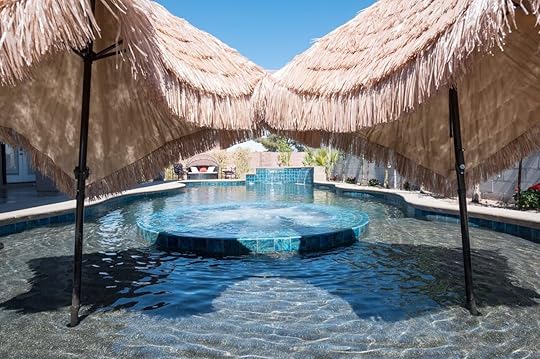
Photo: Airbnb

Photo: Airbnb

Photo: Airbnb

Photo: Airbnb
At this luxurious cabana house, you’ll find a cabana surrounding a giant pool — waterfall included — as well as a high-class kitchen with outdoor table seating for your entire crew. There’s a smoker and grill, a flat-screen TV on the patio, and more lounge space than a room at any resort on the strip. And that’s just outside. Also note the indoor jacuzzi, bright interior and high-thread-count sheets in the bedrooms, and you’re set for a Las Vegas stay that feels as much like you’re at a high-end resort as at a private pad, but hey — that’s what Airbnb Las Vegas properties should be, right?
More like thisTrip PlanningThe 7 coolest neighborhoods in Las Vegas: Where to stay, eat, and partyFebruary 18, 2022
Pilots on Reddit are describing the scariest things they’ve seen while flying

As a passenger, our only job once we board is to sit back and enjoy the ride without disturbing the people around us. And after flying a few times, you get used to the way a smooth flight is supposed to go. Pilots and flight attendants however, aren’t afforded the same luxury. There are all kinds of safety precautions in place, but the pilot’s job is to expect the unexpected.
A Redditor asked pilots to share the scariest things they’ve seen while flying. Buckle up folks, because it’s going to be a bumpy ride.
Flying objects1. My dad told me a story from a few years ago that happened while flying a 737 somewhere in Nevada I think on the way back to Toronto.
It was later in the evening, so you couldn’t see too much, but all of a sudden to the left of the plane my dad saw a really bright ball of light I guess you could say, moving really fast across the sky. My dad and his co-pilot had no clue what it was, and they could hear other pilots nearby calling it in over the radio and asking what it was. Eventually it flew pass and disappeared into the distance. A few days later my dad found out that what he saw was a missile launched by a USN submarine.
I wonder how many passengers thought they saw a UFO lol.” u/NAbbott_737
2. ”My father was a commercial pilot for over 35 years and has been flying for over 45. He has all kinds of wild stories which range from searching for debris after the challenger disaster to the mayhem he endured as a pilot during the 9/11 attacks and even towing banners at the Jersey shore.
But the craziest story I’ve asked him to retell a million times took place off the coast of NSW in Australia in the late 1970’s. His plane and crew were in a traffic pattern and were delayed landing because there was quite literally and unidentified flying object on the radar that the tower was tracking.
For a while they just circled around in this pattern waiting for other planes to land before they could enter the landing pattern and low and behold, the crew eventually got a direction of where this thing was and when they looked out their windows they could see a cigar shaped craft moving very slowly at about their same altitude. Upon seeing this, all of the crew and passengers who could see it audibly gasped and my dad says that was the most disturbing part.
Anyway, eventually it went off scope and they got the all clear to land and nothing more came of it but it was always my favorite story as a kid to hear from my pops.” – u/AlMinPhilly
3. ”Was a flight attendant for a while and we used to get in the cockpit sometimes mid-flight when one of the pilots needed a wee, pretty standard procedure. So one time sitting there and chatting with the FO (pitch dark outside) I noticed a yellow flashing light on the horizon, it was the only thing I could see outside and didn’t really think much about it and kept talking with the pilot.. after a couple of seconds I looked again and it had moved considerably.. couldn’t tell the distance but I would say it was far away from our aircraft so I started to think something weird was going on. Immediately told the pilot and we couldn’t figure out what it was and we just stared when after maybe 5 seconds later it just flew from one side of the sky to the other and then into space… that thing gave me the most omnious feeling I ever had.. I looked at the pilot, he looked back at me and we just sat there in silence thinking wtf just happened. Immediately regretted not taking my phone out to record but it has been a good story to tell on my following flights.” – u/LmOver
Birds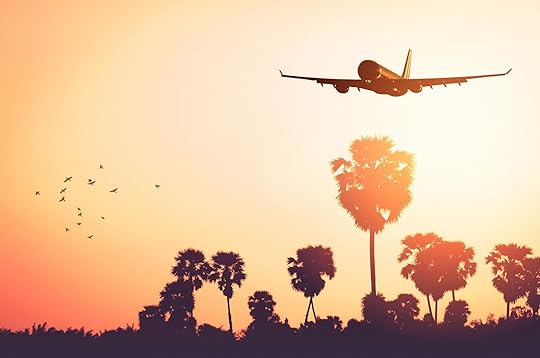
Photo: Tonktiti/Shutterstock
4. “Not a pilot, but my dad is a former one. He once told me about how he almost crashed his Cessna because he hit some geese. He was actually preparing for a landing approach when he hit geese flying in a patch of fog. Windshield was completely shattered and he and his passenger were covered in blood and feathers. They landed safely, but my dad was pretty scarred from that! He didn’t quit flying because of that, but bird strikes remained a constant fear of his. Geese are large birds and they did significant damage to that little plane!” — u/robo-dragon
5. “In Bright, Victoria, Australia there was a magpie which hung out in the paraglider landing zone. Everybody got attacked but it was always at the point where you have to focus so you just ignore the bird and keep flying.” — u/michaelrohansmith
6. ”My dad used to work in the Air Force, and was responsible for the mechanical engineering of the Lockheed C-130 Hercules airplanes. Part of his job was to complete the before flight checklist, a huge list of things that need to be cleared in every plane or helicopter before flight. Another part of his job was occasionally training newbies in this position.
On the first day of training, my dad always told the new guys to always check the engines for bird nests. If the plane had been grounded for a while, seagulls and pigeons would often nest in the engines. This wasn’t necessarily a problem for the engines, but more of a huge annoyance because the cleanup could last for hours if the engines happened to be turned on while I bird was inside.
Anyway he was once giving a demonstration about power control of each engine, and the newbies, who had completed their checklists for the first time that day, had forgotten to check the engine for birds. My dad noticed this and decided to teach them a lesson by stepping back while the pilot fired up the engine. The seagull inside got completely eviscerated, covering the new guys from head to toe in seagull guts and blood. They always remembered to check the engines after that!” – u/titanic_trash
7. “I’ve been pretty lucky in my short piloting career (only around 60 hours as of right now, and am still in training). The scariest thing I’ve seen is a bald eagle about 8 ft from my left wing tip. It was only 8 ft from the wing tip because me and my instructor dove and rolled the plane as soon as possible. Those large birds are a serious hazard to small aircraft (I was in a Cessna 172s). Be careful of your animal pilots!” – u/crockerdile11
Skydivers and other pilots
Photo: Sky Antonio/Shutterstock
8. ”A skydiver about 20 yards off my wing. Was flying a 172 into an uncontrolled field that I’ve flown into 100 times before, not knowing that after a 5 year ban in skydiving there, they were allowing it on a case by case request. While flying in, calling my position, I hear ‘skydiver in the air’. My first thought was I hope they aren’t this direction and then there he was. I had this image of him going through my prop. After that thought oh god please don’t let me kill this guy then I turned to wtf just happened and how did the pilot not call this out better. He flew off completely. Come to find out the pilot was flying his friend to skydive to his local field then departed to his home airport where they came from. I never did find the guy.” – u/Theskidiever
9. ”This actually happened on my first time flying with no instructor onboard, just doing a couple laps around the traffic pattern. Took off, laps #1 and #2 went just fine, nailed a couple radio calls, got that awesome feeling of ‘Yeah, I got this’. But, lap #3 was fine until I was setting up my final approach to land, and the GTN750 (basically a fancy navigation/radio/pseudo-radar system) warned me about a Cessna 1 mile out at the same altitude. Ignored it, since I already had the plane in sight and verified with the control tower that he was landing on the runway parallel to mine.
Lo and behold, this dude zips under me by about 200-300 feet, which sounds like a good amount of room, but is actually butt-clenchingly close in a busy airspace like this. I should’ve applied full throttle and circled back around to try again, but the other plane was clear of me before the startle factor even wore off.
This was made especially dangerous by the fact that the plane I was flying was low-wing (can’t see under me) and the other plane was high-wing (he couldn’t see above him). So, neither of us could see each other and the tower yelled at the guy to get out of my way, and I landed safely.” — u/furry_anus_destroyer
10. “I had a near miss with a twin engine that was flying at the wrong altitude in the opposite direction.
Imagine oncoming traffic one lane over, it was that close. Now imagine it a speed difference of about 300 knots. The fucker hadn’t said a word on the radio, so I had no idea he was even in the area until he was behind me.” — u/eighthourlunch
11. ”Not a pilot; but my dad is. That said, we were flying out of Las Vegas and upon take off we nearly collided with another aircraft. This other guy never radioed into tower, never mentioned anything about landing; just off in his own little world as if he owned the fucking air. He was in a twin engine Beech, we were in a single prop Cessna. We were literally within 200 feet of each other; enough that we could see one another (and could probably smell the shit we were crapping out). Except their pilot. Because that guy was so fucking clueless he probably didn’t even know there was a runway there. I wouldn’t be surprised if he was trying to land on the actual Las Vegas strip.” — u/AutumnAtronach
System failures
Photo: yanishevska/Shutterstock
12. “My fiancé was flying in military plane, working, when he looked out the window and noticed one of the turbines on the wing smoking. He radios up, trying to stay calm and goes ‘uh, guys, I think our wing is on fire’
And the pilot goes ‘damn. Again? Hold on, let me kill the engines’
My fiancé says he has never been more terrified than in that moment (especially cause if the plane goes down, his life is not the priority. The destruction of his equipment was, even if it cost him his life). They killed the engines, coasted for a minute or two, then turned them back on, and everything was good. What’s really bad is the other plane was under maintenance for an even worse issue so that was the only plane that could get into the air and it had to fly constantly for their mission so they had to keep using it until the other plane got fixed. My fiancé wasn’t part of the regular flight crew (normal guy was sick and fiancé had the training and clearance so they pulled him for it), and he said he never complained again about loading or unloading the planes after that.” – u/huskeya4
13.”Navy Helicopter Pilot here. I’ve got two that would be a tie:
Hearing a once per revolution thumping coming from the rotor head. Then on approach to land the torque gauges went dead, indicating a double engine failure. Luckily the engines were still running, unlike the gauges.
Hearing the Rotor RPM suddenly decrease for no known reason, followed up by a Master Warning indicating an engine failure. Engine re-started itself a moment later and it was all good. Still shit myself though.
Also teaching people to land on ships at night is just generally terrifying.” – u/auntyjamesauntyjames
14. “Skydive pilot here. Had a lady come in to do a tandem skydive. Me, her, and the instructor are the only ones on the aircraft. She had never been skydiving, nor ever been in a plane before.Something felt weird in the engine during the climb, but all indicators were showing normal. A few minutes later, one of the cylinders blew. While it scared me, training kicked it, but ill never forget the “Oh shit im gonna die” face she had when it happened.” –- u/austin4529
So the next time you’re on a flight, no matter how many times you fly, be sure to pay attention to the safety instructions, and thank your pilots when you land. 
Everything you ever wanted to know about freediving, including where to get started
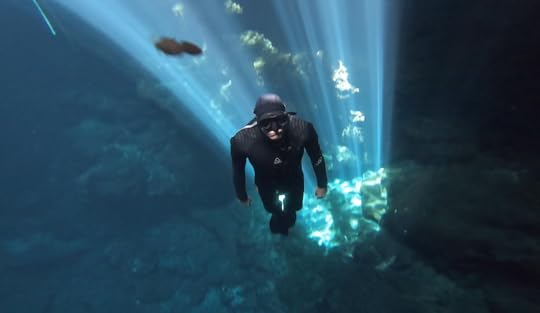
it’s as simple as taking a breath, being able to swim, and believing in yourself. If you can do that, you’re ready for freediving – the sport of diving underwater on a single breath (and without any air tanks). The silent, underwater world is yours to experience when you freedive, and you only need to go as deep as you’re comfortable with (though the world record for freediving is 702 feet below the surface).
There’s no splashing or crashing of waves; as soon as you slip beneath the surface, you’re greeted by aquatic serenity. The feeling of being weightless and moving in any direction without the pesky laws of gravity feels akin to flying underwater. That’s a big part of the appeal for many freedivers (and beginner freedivers).
What is freediving? How does it work?With the rise of wellness retreats, life-improvement courses, and meditation phone apps in recent years, it’d be easy to regard freediving as just another fad or marketing gimmick to sell everything from mindfulness to fitness. While freediving ticks these boxes, its roots were planted well before the age of telephones and life coaches, both historically and – believe it or not – genetically.

Photo: Nokuro/Shutterstuck
In Malaysia, some Bajau Laut people, part of a group of people who have embraced the term “sea nomads,” can stay underwater to hunt fish for up to five minutes. And it’s not just young, strong men staying under for minutes at a time. It’s also freediving grandmas who collect sponges and shells off Jeju Island in Korea, along with the Moken, an indigenous group living on Thailand’s west coast, among others.
The bodies of these people who can spend minutes underwater have evolved over centuries due to the amount of time they spend in the water — around five hours per day, regularly diving as deep as 65 feet. Studies show that their spleens are around 50 percent larger than an average human’s. When a human dives underwater, their spleen contracts, releasing red blood cells into the bloodstream. A larger spleen means a greater supply of red blood cells, which means more oxygen, creating the ability to stay underwater longer.
Freediving schools teach breath-hold techniques and how to minimize your muscle use to preserve oxygen in the bloodstream.
What are the benefits of freediving?
Freediving can be one of the most peaceful experiences you’ll have on vacation // Photo: Kona Freedive
Benefits are subjective, but there are two significant benefits: freediving will increase your fitness and help you manage stress.
On the physical side, freediving is a gateway to a healthier lifestyle. It’s easier on your joints as there’s less pressure underwater, and since it’s no-impact activity (unlike running or team sports), it helps develop muscles. It also increases your endurance and helps build energy and stamina with fewer unexpected injuries.
Freediving helps strengthen your lungs and you can do specific exercises to increase your oxygen capacity. That’s useful even out of the water, since some studies have suggested more oxygen leads to a boost in brain activity.
And what is freediving in terms of mental gain? Well, it’s a lot. Compared to the physical exertion of swimming laps, freediving is akin to mental chess. It helps you hone and understand various relaxation and concentration techniques you can use in daily life. You’ll likely be more composed in stressful situations and worry less about everyday problems. You’ll also have to face your fears, be it from simply being underwater or managing your oxygen levels. But you can ease into that at your own pace.
Training your mind to be calm and your body to adapt takes time, and you can do it in small stages. You’ll start by taking one breath and diving down into the water. The first task will be just getting your heartbeat to slow while your body learns to trust the experience. It’s similar to the benefits of meditation.
What is freediving scoring like? How is success measured?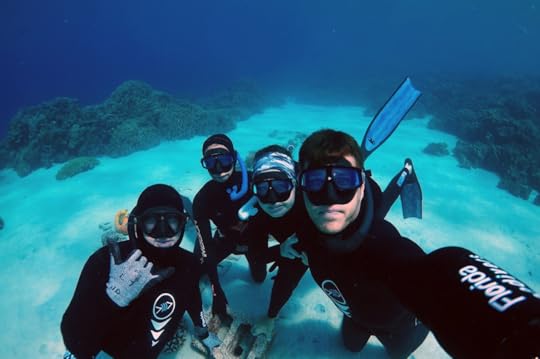
Freediving is about enjoying yourself and finding peace underwater, not setting records // Photo: Florida Freedivers
As world champion freediver Umberto Pelizzari puts it, “The scuba diver dives to look around. The freediver dives to look inside.”
Unlike almost every sport on the planet, where the goal is to get your heart racing and increase adrenaline levels, the purpose of freediving is the complete opposite. To be the best you can be, your body needs to relax both mentally and physically. Some freedivers explain the feeling as being one with the water. A more relaxed body consumes far less oxygen than a tense one. And equalizing (trying to get the pressure inside your body roughly equal with the pressure of the water), which is essential for safely freediving, is much harder to do when you’re tense.
Sure, you can record your depth or time how long you’re able to stay underwater, but the real goal is the mental ability to relax, pace your body, and slow your oxygen consumption enough to enjoy the underwater world.
How to practice breathing
Always, always, always have a buddy with you when you practice breathing techniques // Photo: Kona Freedive
The greatest obstacle most freedivers face is their mind and body wanting to breathe – you have to fight the urge. The longer you hold your breath, the more carbon dioxide will build up in your blood cells. That can lead to various minor-to-moderately dangerous symptoms for freedivers, like headaches and muscle soreness. But mentally accepting that and practicing breath-holding techniques before you dive in will help you lower your heart rate and relax your brain and body, helping you excel underwater.
Online, there are a variety of breathing techniques anyone can access. Schools like Sydney, Australia’s Immersia Freediving and global diver organizations like Deeper Blue have classes, videos, and tutorials you can follow at home. But breath training should not be done alone, on land or in the water, in case you get dizzy or blackout. Always practice with a buddy (or better yet, an expert) whether you’re in or out of the water.
The easiest and first technique to practice is called belly breathing — inhaling air in such a way that it makes your stomach, rather than your chest, rise and fall. It’s easy to practice but will take some time to master.
What is the US freediving scene like?
Photo: Dive California
The main freediving global bodies are the International Association for the Development of Apnea (AIDA), Scuba Schools International (SSI), the Professional Association of Diving Instructors (PADI), and the World Confederation of Underwater Activities (CMAS). All offer beginner courses, and there’s no shortage of beautiful places to learn.
As well as being home to monstrous surf, the Hawaiian islands have some of the deepest and most easily accessible blue-water (open ocean) dive locations, many of which are reliably calm. A popular operator is Kona Freedivers, which also offers open ocean safaris. A benefit of freediving in Hawaii is that you may be lucky enough to see whales, dolphins, whale sharks, big pelagic fish, sharks, and mantas during the boat ride out to your dive site.
Of course, you don’t need to cross the Pacific to learn freediving basics. With a long, curving coastline and stunning lakes, there are plenty of places to try freediving in California. In San Diego, try Dive California, which also practices marine conservation and eco-friendly diving. Most dives are around La Jolla, which is known for sea lions, small smarks, and great kelp beds, although the water can be a bit chilly. Also check out San Diego Freedivers, a club that holds ongoing events for freedivers.
As you may expect, freediving in Florida is fairly well-developed. Popular areas include Key Largo, Key West, Merritt Island, and the freshwater springs and caves around the town of High Springs.
Florida is heavy on marine life like angelfish, blacktip sharks, turtles, giant grouper, and blue tangs – which Pixar fans may recognize as Dory from Finding Nemo – so you’re not going to be bored underwater. Check out Florida Freedivers for highly rated beginner classes near North Palm Beach.
What is freediving like in other countries?
Photo: La Casa Surya
The sport is international, and standards, techniques, and safety are similar worldwide.
Mexico’s Yucatan Peninsula is remarkable for scuba divers and freedivers thanks to its expansive subterranean networks of caves and caverns, accessed via cenotes. Cenotes are akin to sinkholes filled with turquoise-blue, clear freshwater. They have a relatively reliable year-round temperature (around 77 degrees Fahrenheit) and are usually easy to access, with stairwells and diving platforms atop some of the more popular cenotes.
Local freediver operator La Casa Surya offers all levels of courses and freediver experience days where you can try the basics of freediving without committing to a complete certification program. It’s a great place to learn as the cenotes are inland and underground, so there’s little to worry about in terms of wind, currents, tides, or sharks.
If you want to head further afield, check out Apneista in Bali, covering everything from basic to instructor courses. While the island’s southern coast is no stranger to surges of tourists and solid waves, the north retains the small-town charm and quieter waters. With year-round water temperatures of 82 degrees Fahrenheit and visibility up to 100 feet, there’s plenty to keep a freediver happy.
Jemeluk Bay is the most protected deep bay on the north coast of Bali and you can reach depths of up to 160 feet by swimming from the shore. The bay has vibrant reefs, a coral wall, and is generally protected from the trade winds. Two unique offerings from Apneista are the options to freedive with giant manta rays or freedive on well-preserved shipwrecks.

Photo: Apneista Bali/Bradshaw Kroll Photography
If you’re near southeast Asia, the island of Koh Tao in the Gulf of Thailand is also a premier freediving location. It’s protected from seasonal typhoons and lacks strong currents. It’s tropical and warm year-round, creating a haven for marine life like reef sharks, stingrays, nudibranch (tiny, insanely colorful slug-looking creatures), barracuda, and even the occasional whale. Freedive Koh Tao is the premier school in the area, offering everything from two-hour courses to month-long “master” courses.
What was once a fringe activity is now being taken up by people from around the world. While freediving is very popular in the scuba diving community, it’s also popular for vacationers who only have a day to spare. The goal isn’t ultimately to set a world record — it’s to have fun, learn some new stress and meditation skills, and experience life undertaker. You just need a mask, fins, and a sense of adventure. Freedom is awaiting you in the big blue.  .
.
More like thisDivingWatch the woman who found salvation in free diving under the Arctic ice
In southern Portugal, bite-sized snails are summer’s most satisfying snack

The first time I ate snails in Europe was not in France, where golfball-sized escargot are famously sauteed in garlic-parsley butter and served as an hors d’oeuvre year-round, but in Portugal, where snails closer in size to the head of a golf tee are stewed in garlic-oregano broth and served as a summertime snack called caracóis.
My introduction to caracóis was more like an initiation. It was a scorching August afternoon in Lisbon’s South Bay. I’d spent the day nursing Sagres beers on the Costa da Caparica with my friend Filipe, who was hosting me for the week, and his friends Sara and Beatrix, who insisted I try the dish before the week was up, the contents of which they also insisted remain a surprise.
On the drive back from the beach, we pulled over at a small grocery store to stock up on the necessary ingredients: another sixpack of Sagres, a sleeve of sliced white bread, and a plastic bag filled with what looked like seashells, half suspended in an amber liquid.
“Do you know what these are?” Sara asked me, smirking, as she emptied the plastic bag into a saucepan in Filipe’s kitchen. Upon closer inspection, I realized that the shells I’d imagined might have belonged to hermit crabs belonged to another creature altogether: tiny land snails.
They only took a few minutes to prepare. Sara brought the liquid to a simmer, Beatrix toasted a few slices of bread, and Filipe rooted around his drawers for a box of toothpicks, which I learned were used to pry the snails from their shells while the toast was there to sop up the broth.
This is a familiar ritual in greater Lisbon, Portugal’s south-central Alentejo region, and the Algarve region south of that. Between May and August, or any month not containing the letter “r” as the local saying goes, countless cafes and homestyle restaurants called tascas put out signs reading “Ha caracóis!” or “Temos caracóis!” to let passersby know they have snails on offer.

Photo: Faible/Shutterstock
The snack is so popular that the Portuguese eat an estimated 4,000 tons of snails each year, which translates to millions of individual snails if only a fraction of the 30,000 tons that are consumed annually in France. (The prevalence of snails in Western European cuisines can be traced back to the Roman Empire when they were considered a delicacy.) Escargot-sized land snails called carcoletas are also eaten in mainland Portugal, as are sea snails called lapas in the Azores islands, but neither is gobbled up as ubiquitously or joyously as caracóis.
As delicious as the dish itself is the way caracóis is eaten in Portugal: one toothpickful at a time, in a motion that quickly becomes as compulsive as cracking open pistachios or slurping oysters from the half shelf. (With enough practice, caracóis can also be sucked out of their shells without the aid of a toothpick.) It’s an inherently social snack, one that’s typically served as a shared appetizer or a happy hour nibble alongside half-pints of beer known as imperials.
Even Filipe, who never developed a taste for caracóis, relished the activity of sharing a bowl with friends — and on that particular day exposing an American to a time-honored Portuguese tradition.
Of the many meals I’ve since had in Portugal, it’d be impossible to declare any one dish my favorite. But without a doubt, some of my most precious mealtime memories have begun by walking the streets of Lisbon on a summer day, scanning chalkboard menus in search of those two magic words: “Ha caracóis!” 
Nearly one million Airbnb hosts now offer EV chargers

if you’ve ever dreamed of taking a cross-country road trip without spending hundreds on gallons and gallos of we have good news for you: it’s now easier than ever to do that in an electric vehicle. A huge amount of accommodations around the world are installing EV chargers for guests to use, and that includes private homes, too. Airbnb disclosed this week in a press release that 850,000 of its host properties around the world now have EV chargers for guests. And that’s in addition to the tens of thousands of hotels globally now offering charging stations.
“We continue to innovate this year, as a travel revolution continues to transform how we live and work — as well as how we drive,” Airbnb’s release stated. “The number of searches by guests for EV Chargers — among the new updates rolled out last year — doubled between June and December of last year, totaling over half a million unique searches by year end.”
(By the way, searching for a rental with an EV charger is easy on Airbnb. When you’re looking at the available rentals, just click “more filters” and scroll down to the “amenities” section.)
Having access to convenient, frequent EV chargers is certainly a prerequisite for making personal travel cleaner. Also important, though, is that electric vehicles continue to become more and more affordable. CNBC reported in December that the average transaction price for an EV is $56,347, about $10,000 above the average price of a gas-powered vehicle. Granted, EVs require far less maintenance, which keeps their ownership costs lower. And as gas prices remain above $3 per gallon, the idea of eliminating fuel altogether sounds quite appealing.
Still, the average American consumer isn’t buying a $56,347 vehicle. No matter how many Airbnbs with EV chargers there are, that’s far too high of an entry price point (the average American salary in 2020 was around $52,000 annually).
But there are signs the cost of new EVs may be on the decline. More are being produced, which drives prices down by creating competition and results (eventually) in more used EVs being available for purchase. Right now, the average price of a used EV hovers around $31,000 – still far more than many people are willing to spend on a vehicle. As any who’ve bought a used car before can attest to, the cost – and quality – of what you get varies widely.
As frustrating as this can be, that diversity also ensures there are options available at a wide range of price points. In the early 20th century, the availability and low cost or private automobiles is one of the reasons they were adopted so quickly — supply was available before the demand. That same strategy will hopefully lead to the mass adoption of EVs in the 21st century. And as used EVs flood the market in the coming years, more low-priced options will appeal to consumers looking for pre-owned vehicles, too.
Ideally, knowing that it’s far easier now to keep vehicles charges on cross-country trips will help buyers feel like like EVs are a practical option. Beyond the adoption of chargers at accommodation properties, “gas stations” of EV chargers are beginning to pop up, rental car companies are putting in bulk orders for EVs, and there may even be a nice tax rebate when you finally do make the switch.

Photo: Sundry Photography/Shutterstock
Tools to help you locate EV chargers when travelingPlugShare operates an ever-changing map of hotels with EV chargers around the world and has an app to match.The Alternative Fuels Data Center maintains a database of EV charging stations, including Tesla Supercharger stations, searchable by country.Airbnb, Hotels.com, and Expedia have added an EV charger filter to their search tool, allowing users to easily filter results to only properties with chargers.More climate wins this weekCalifornia’s Turlock Irrigation District, a water and electricity utility, will install solar panels over irrigation canals in a double-win for residents, especially farmers. According to Gizmodo, the district secured a $20 million grant from the state to test the concept, which studies have shown could prevent 63 billion gallons of water from evaporating each year if it’s installed across all California irrigation canals.
Construction began at New York’s first offshore wind farm, The Verge reported. When completed in late 2023, the wind farm should produce enough energy to power 130,000 homes in the city of East Hampton.
We close this week with a heartwarmer. Scientists with German NGO BioRescue have successfully created two northern white rhino embryos from an adult at Kenya’s Ol Pejeta Conservancy. The embryos, which bring the total number of northern white rhino embryos to 14, will be transferred to surrogate mothers in the near future. 
7 of the most unusual and creative regional margaritas from across the United States

The original margarita is a classic for a reason. With just three ingredients – Cointreau, tequila, and lime juice – it’s a relaxing beach vacation in a glass. However, the margarita’s simple foundational ingredients mean that this cocktail is easily customizable, and bartenders across the country have adapted the margarita to reflect different regions of the United States. Depending on where you live, you’ll find types of margaritas that break from tradition and pay homage to the state where they were created.
Curious drinkers can find margaritas with floral notes or spicy and smoky ingredients that represent (mostly, though not exclusively) the warmest parts of the country, stretching from the Southwest to the Southeast and beyond. These regional ingredients, from sage, to jerk spice, to hibiscus flowers, add character and color to the straightforward margarita – and a glimpse into the diversity of America’s palate.
Here are seven variations on the margarita that use regional ingredients that you can find in bars in Hawaii, Florida, Arizona and more.
1. Tucson, Arizona: Green chile liqueur margaritaThe Southwest is America’s green chile capital, where it’s incorporated into salsa, stew, marinades, and, yes, even cocktails. The spicy pepper’s hint of smokiness makes an obvious compliment to the tang and spice of a margarita.
At the Hotel Congress in Tucson, the Congress Margarita is all about that heat: In addition to green chile liqueur, the chiltepin – a tiny red chile in the shape of a berry that grows wild in Arizona – seasons the rim and a slice of jalapeño serves as the garnish.
One to try: The Congress Margarita at Hotel Congress, Hotel Congress, 311 E Congress St, Tucson, AZ 85701
2. Hawaii: Hibiscus margarita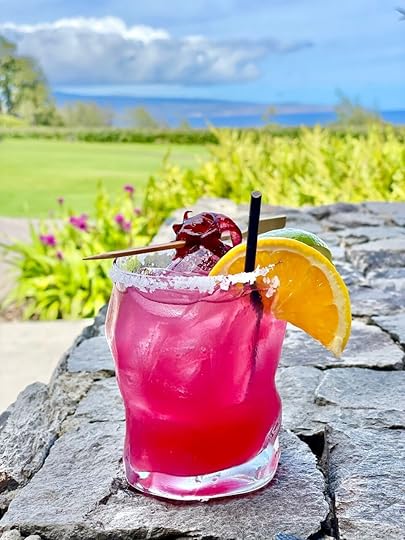
Photo: Courtesy The Ritz-Carlton Maui, Kapalua
For a tropical twist on the margarita, try one infused with hibiscus syrup and garnished with the red flower. The hibiscus flower is native to Hawaii (in fact, the yellow version is state flower) and lends a tart, refreshing flavor to teas and cocktails. Hibiscus also imparts a hot pink hue to the cocktail. The hibiscus margarita at the Ritz-Carlton in Kapalua, Maui, adds a dash of raspberry puree to the mix for an extra splash of fruit flavor.
One to try: RC-biscus Rita at Ritz-Carlton 1 Ritz Carlton Dr, Kapalua, HI 96761
3. Austin, Texas: Sotol margarita
Photo: Courtesy Aba
Sotol, also known as the desert spoon plant, is native to Mexico and parts of sest Texas. Used to distill a spirit of the same name, the sotol shrub produces a liquor that is similar to tequila and tastes bright, crisp, vegetal, or grassy. Aba, a Mediterranean restaurant in Austin, created a sotol margarita that also incorporates LALO Blanco tequila – an Austin-based company that produces its tequila in Jalisco.
One to try: There Is No Spoon margarita at Aba, 1011 S Congress Ave, Austin, TX 78704
4. Miami: Jerk spiced agave margarita
Photo: Courtesy Mamey Miami
Jerk cooking originated in Jamaica. This blend of allspice, thyme, nutmeg, brown sugar, and Scotch bonnet peppers pairs as well with margaritas as with food in Miami. Tequila and spicy heat go hand in hand, and the sweet and smoky flavors of jerk seasoning will transport you into the warmth of a tropical getaway. One version at Mamey in Miami uses agave seasoned with jerk spices and combines strawberry cordial and watermelon juice for an extra punch of summery fruit flavor.
One to try: Jerk Margarita at Mamey, 1350 S Dixie Hwy, Coral Gables, FL 33146
5. Los Angeles: Prickly pear margarita
Photo: Courtesy La Cuevita
The prickly pear cactus thrives in California’s desert climate. The pink egg-shaped fruit, which sits atop the cactus like a crown, is similar in flavor to watermelon and, like hibiscus, turns the margarita a playful magenta color. At La Cuevita in Los Angeles, refreshing prickly pear replaces the more traditional orange liqueur and is paired with habanero tequila for a hint of heat.
One to try: The Blind Pear Margarita at La Cuevita, 5922 N Figueroa St, Los Angeles, CA 90042
6. Denver: Sage margarita
Photo: Courtesy The Brown Palace
Sage grows wild on the hillsides of Colorado’s Rocky Mountains. This exceptionally earthy herb is sometimes described as peppery or musky, with hints of pine and citrus. The iconic and historic Brown Palace hotel in Denver adds a smoked sage simple syrup to its margarita to pair with the innate smokiness of blanco tequila.
One to try: The Sage Horia at The Brown Palace, 321 17th St, Denver, CO 80202
7. Little Rock, Arkansas: Herbal margarita
Photo: Courtesy Pink House Alchemy
Herbs grow all over the country, but the margarita served at Pink House Alchemy in Little Rock incorporates one hyper-local element: The “herbalicious” syrup, packed with rosemary, mint, lavender, and thyme, grown at Heifer Village & Urban Farm in Little Rock. The name of the margarita is inspired by a Little Rock icon, too: Daisy Bates, an American civil rights activist, who fought for school desegregation in Arkansas.
One to try: The Daisy Bates at Pink House Alchemy, 928 N College Ave, Fayetteville, AR 72701 
These Yellowstone Airbnbs near each entrance make for the perfect gateways to the park

Yellowstone National Park is home to over 2.2 million acres of adventure. Here, you can visit the springs and thermal pools, hike, fish, or bike, and of course, spot wildlife en route. The time to hit Yellowstone is nigh — and these are the top Airbnb Yellowstone area rentals that will set the tone for whatever adventure or relaxation time you have in mind.
West Yellowstone Airbnb rentals near Yellowstone National ParkJackson Hole Airbnb rentals near Yellowstone National ParkCody, Wyoming Airbnb rentals near Yellowstone National ParkWe hope you love the Airbnb Yellowstone properties we recommend! Just so you know, Matador may collect a small commission from the links on this page if you decide to book a stay. Listed prices are accurate as of the time of publication. See our full Advertiser Disclosure here.
West Yellowstone Airbnb rentals near Yellowstone National Park
Lakefront cabin a short drive from Yellowstone

Photo: Airbnb

Photo: Airbnb

Photo: Airbnb
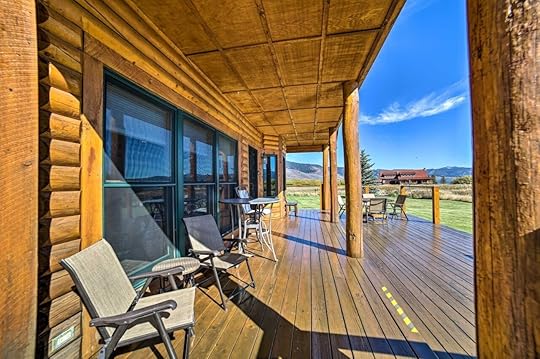
Photo: Airbnb
This rustic, relaxing Airbnb Yellowstone rental is the perfect retreat for someone looking to bask in all that nature has to offer. The home is nestled on Henry’s lake, presenting beautiful waterfront views and gorgeous mountain views. Guests can experience much more here than just sitting out on the front porch watching the sunrise and sunset. There is kayaking, fly fishing, hiking, and more outdoor activities to enjoy. With just a short drive to Yellowstone, this home has everyone one would need for a convenient gateway to the park.
Six guests, three bedrooms
Price: $406 per night
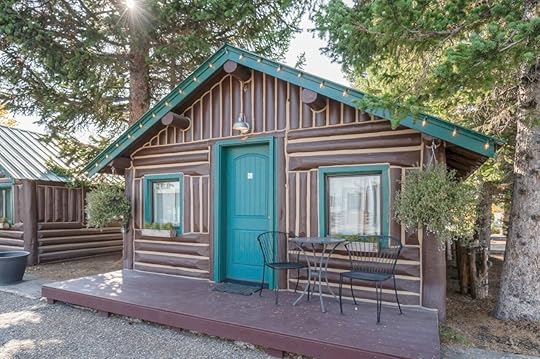
Photo: Airbnb

Photo: Airbnb

Photo: Airbnb

Photo: Airbnb
Initially built in the 1950s, this quaint renovated cabin will accommodate guests with a cozy, comfortable place to relax after a full day of adventure. The comfortable and warm cabin comes with two TVs, a microwave, refrigerator, coffee maker, a full bathroom, a small dining room, and a living room. The cabin is situated in the heart of town near restaurants, shops, and dining and is just blocks away from Yellowstone.
Four guests, one bedroom
Price: $331 per night
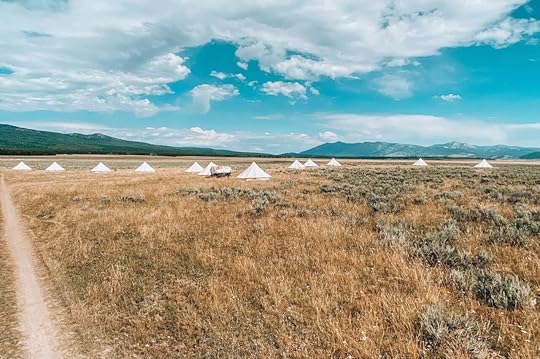
Photo: Airbnb

Photo: Airbnb
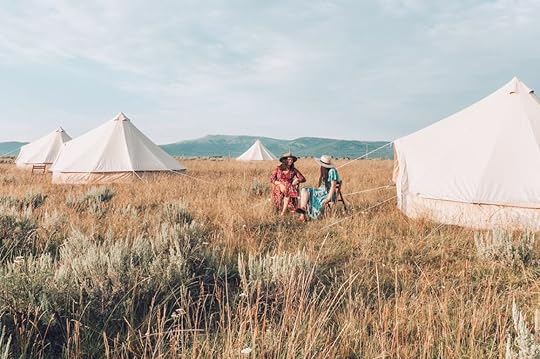
Photo: Airbnb

Photo: Airbnb
Experience Yellowstone in a whole different way with this unique glamping experience. Here’s the perfect way to take yourself on an entire new adventure in northwestern Wyoming. This unique boutique hotel experience is just 20 minutes outside of West Yellowstone. This boutique hotel immerses guests in an outdoor environment and includes more amenities than your traditional camping experience, all while still operating off-grid. There are luxury beds with high thread count sheets, comfortable pillows, blankets, and rugs that give that “home away from home” feel.
Two guests, one bedroom
Price: $143 per night
Taking a national parks road trip? Check out Matador’s guides to the best places to stay near top national parks:
Southern Colorado Airbnbs for a mountain getaway near Mesa Verde National Park 10 Airbnb Estes Park area rentals for a beautiful Rocky Mountain National Park stay These stunning cabins are the ultimate Zion National Park basecamp The best 14 Airbnbs near Yosemite National Park The ultimate ‘work and play’ road trip through Utah’s canyon country
Jackson Hole Airbnbs rentals near Yellowstone National Park
Modern bungalow in the heart of downtown Jackson

Photo: Airbnb

Photo: Airbnb

Photo: Airbnb

Photo: Airbnb
Check out this luxury cabin in the heart of downtown Jackson Hole. This lush cabin offers the perfect mixture of comfort and luxury simultaneously. In the cabin is a fully equipped kitchen and spacious living room with a pull-out sleeper sofa for extra guests. If guests want to seize the day outside and enjoy some nature, there’s even a lavish large deck on the outside of the home with stunning views taken in from comfortable and cozy seating areas. The deluxe cabin is just two blocks from Jackson Town Square.
Six guests, two bedrooms
Price: $603 per night

Photo: Airbnb

Photo: Airbnb

Photo: Airbnb

Photo: Airbnb
This new lush lodging is one of Jackson’s latest luxury properties. The Pearl at Jackson Penthouse gives guests a mixture of luxury living and the conveniences of being right near the town square. This modern lush living has floor-to-ceiling windows and other large windows, a spacious living room, and a dining room with a fully equipped kitchen and other resort-like amenities. There is also an expansive third-floor wrap-around deck with a hot tub that offers beautiful views of Jackson.
Four guests, two bedrooms
Price: $949 per night
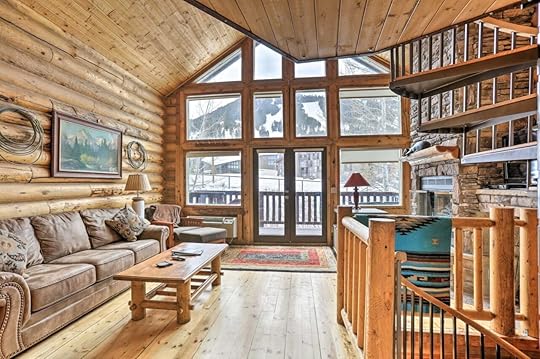
Photo: Airbnb

Photo: Airbnb

Photo: Airbnb

Photo: Airbnb
Here is a mountain escape with perfect views that make for the ideal home base for a Yellowstone excursion. This two-bedroom, three-bath home has rustic features, and the interior has a spacious living room with large windows, a full kitchen, an outdoor space with a full front deck, and a back deck with a charcoal grill.
Seven guests, two bedrooms
Price: $322 per night
Cody, Wyoming Airbnb rentals near Yellowstone National Park
Spacious ranch lodge on the outskirts of Cody

Photo: Airbnb

Photo: Airbnb

Photo: Airbnb

Photo: Airbnb
Just on the outskirt of the historic city of Cody is this stunning serene lodge that is just five minutes from town. Enjoy this 2,112-square-foot lodge with Wyoming-made log walls, a spacious living room with views of the mountains and rustic interior, and an open, fully equipped kitchen and dining area. Guests can also explore the property and visit the ranch animals along with the privately-owned covered bridge with a large pod and island to enjoy the beautiful views and other native wildlife.
Seven guests, three bedrooms
Price: $243 per night

Photo: Airbnb

Photo: Airbnb

Photo: Airbnb

Photo: Airbnb
Come out and enjoy one of east Yellowstone’s best cabins for solo travelers or couples on your next national park gateway. This charming cottage has one bedroom with a full-sized queen bed, a full bathroom, and a fully equipped kitchen. The comfortable seating area has a fireplace with a custom window seat.
Two guests, one bedroom
Price: $200 per night

Photo: Airbnb

Photo: Airbnb

Photo: Airbnb

Photo: Airbnb
This newly built, futuristic home located on 11 acres is everything you could want and more for your Yellowstone vacation. This contemporary home gives guests a mixture of mid-century modern with a hint of a country feel. The home features an open floor plan with a living room and a spacious kitchen with a dining area. There are two bedrooms, an office, and an extended patio where guests can BBQ and sit next to the fire pit at night, look up at the beautiful night sky, and have 360-degree views of the mountains. 
Four guests, two bedrooms
Price: $229 per night
The perks of Hyatt’s new workcation program make remote work feel luxurious

Are you tired of sitting at your desk at home and doing the same thing every day? While a nice change from commuting, working from home can become real boring, real fast. If you’ve been dreaming of a workcation, whether it’s local or international, we have just the treat for you. Hyatt launched their Work from Hyatt program during COVID-19 to give everyday workers the chance to “change it up” when it comes to working from home.
So what does it mean to take a workcation from a Hyatt, you ask? Let’s break down the deal.
We hope you love the spaces and stays we recommend! Just so you know, Matador may collect a small commission from the links on this page if you decide to book a stay. See our full Advertiser Disclosure here.
What is the Work from Hyatt program?If you book a minimum stay of five to seven nights using the code WFHYAT, you get access to a suite of amenities that may be just what you need to get out of your rut.
What is included in the Work from Hyatt program?The room you book.A private space, either in a conference area or a separate guest room during your working hours.This is a particularly enticing bonus for those of you living the #studio life in the city.
Access to a daily food and beverage credit.Free high-speed internet access.Daily housekeeping at your preferred time.Waived resort fees.You can even use your Hyatt points to book the room, making your workcation much cheaper.
Different hotels also are offering different types of inclusions like personal trainers, pool cabanas on your days off, spa deals and more. Sounds pretty sweet right?
How to book the Work from Hyatt programSo, how do we make this dream come true? Easy. Check out the promotion page on the Hyatt website to see what hotels qualify for this offer.
As an example, I clicked into the stunning Andaz Mayakoba in Mexico to see what types of rates I could expect.

Photos: Hyatt
While it’s technically about $40 more per night for this offer, there are no resort fees and the inclusions are excellent. Breakfast per person at this resort is $40, so if you’re traveling alone or with a travel buddy, it’s immediately worth it.
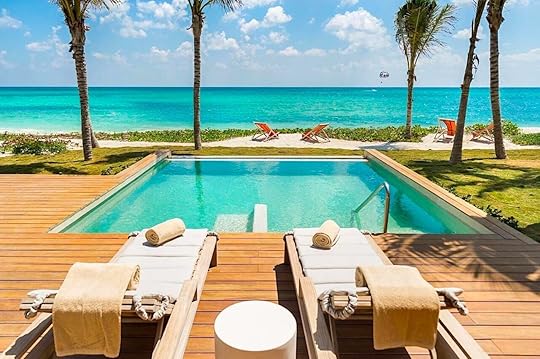
Photo: Booking.com

Photo: Booking.com

Photo: Booking.com
At Andaz Mayakoba, they’re also offering a free dinner each week as well as 20 percent off food and beverage for your stay. Remember, even if you book their smallest room, you get access to a private workspace either in the conference area or a separate guest room.
If you’re not trying to travel internationally right now, check out some of the Hyatt hotels closer to home.
In the case of the Park Hyatt Beaver Creek in Colorado, for example, you’ll find rates lower for the promotion than booking without the Work From Hyatt promo.

Photos: Hyatt
While they’re not quite as generous with the freebies as our friends in Mexico, you’re getting a complimentary breakfast plus the other named benefits of the promotion.

Photo: Booking.com

Photo: Booking.com
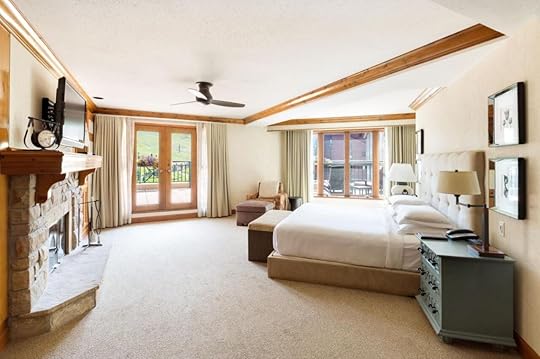
Photo: Booking.com
What’s better is that you can also book this room for 25,000 points per night with the promotion. If you’re looking to burn some Hyatt points, this may be a great excuse to do so.
How to maximize your Work from Hyatt workcationWhile you’re questioning whether or not to hit that “book now” button, let me give you some quick tips on how to maximize your stay, regardless of where in the world you choose to go.
1. Play around with your travel datesThe first thing to keep in mind is the days that you book. Rates change daily and are based on supply and demand so I would play around with your travel dates. If possible, try to book a stay that starts on a Friday or Saturday and ends on a Saturday or Sunday to maximize your play and your work time.
2. Consider your time zones and company rulesNext, if you are looking to go abroad, consider your time zones and company rules. Are you allowed to work out of state? If so, awesome. Find a destination in a timezone that works for your schedule. When I do a workcation like this, I try to optimize my days by working early or late, depending on the timezone. I’ll plan my schedule around my usual time zone, for example, Pacific Time, even if I am on Eastern Time so that I can have a few hours free in the day to enjoy the beautiful destination.
3. Use your points or use a Hyatt credit cardThird, booking on points may be a great option, particularly if you’re traveling somewhere in high season and want to save your cash for the room service and onsite amenities. Standard rooms are booked on points and can be used with the promotion. Simply toggle between “view points” and “view rates”. If you don’t have any points, consider using the Hyatt credit card to book to maximize your points earned.
4. Bring your own snacksLastly, BYOS (bring your own snacks). When I travel, particularly if I plan to work from a hotel, I pack some snacks so I don’t spend unnecessarily during my trip. I save my hard-earned money for nice dinners out and happy hours. I usually plan to have big breakfasts (especially if they’re included) and a light snack before dinner. This also helps me stay focused throughout the day and not get distracted by the hotel’s amenities when I have to go searching for lunch. AKA, I get to finish my day earlier since I work through lunch.
If you’ve been looking for an excuse to switch up your routine, now’s your chance and Hyatt is making it exceptionally easy to do so. Whether you’re looking to stay nearby or go big and go international, there are a lot of deals waiting to be booked to help you get out of your work from home rut and start the new year off right. 
Matador Network's Blog
- Matador Network's profile
- 6 followers



